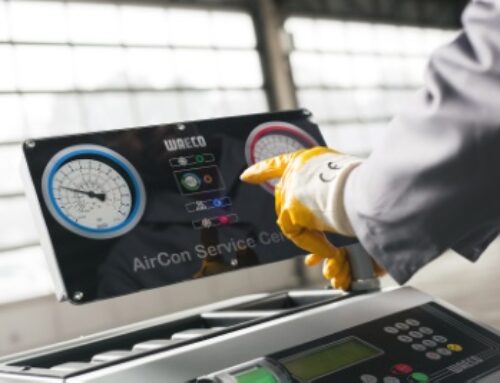RTITB: Driver CPC should cater to all kinds of learner
 Transport training accrediting body RTITB has emphasised the importance of tailored learning when it comes to Driver CPC, highlighting the fact that not all drivers learn alike.
Transport training accrediting body RTITB has emphasised the importance of tailored learning when it comes to Driver CPC, highlighting the fact that not all drivers learn alike.
“The challenges of recent months have been felt acutely across the transport industry when it comes to training,” said RTITB managing director Laura Nelson (pictured, right).
“With extra measures needed for face-to-face driver training for industry key workers and many staff furloughed, keeping Driver CPC periodic training plans on track has been difficult for many.
“So, when training is delivered, it really needs to count – more so than ever.”
Understanding how different types of people learn is fundamental to this, Laura contends – as it can help those delivering training during the current unusual circumstances, as well as providing valuable insights and lessons that will make all future training more impactful and relevant for drivers.
“It should be no surprise to those involved in the delivery of training of any type that people learn in different ways,” Laura continued.
“There are generally considered to be four main learning styles for Driver CPC Instructors to be aware of.”
The styles she identifies include ‘auditory learners’ – people who prefer to hear information, rather than seeing it displayed visually or reading it; and ‘visual learners’ – candidates who would rather see information so that they can visualise the relationship between different concepts.
Meanwhile, ‘readers and writers’ benefit most from interacting with text, rather than using visual or auditory information; and ‘kinaesthetic learners’ learn best from hands-on, experiential learning.
Laura also highlights gender as a factor.
“While not every operator has the same strengths and weaknesses due to gender alone… there are general trends we see around gender that may be helpful to consider,” she suggested.
“In general, female trainees tend to have a better memory, bring greater focus and attention and are more articulate, displaying a better use of language.
“Meanwhile male candidates often bring greater special awareness and more mechanical focus to the training environment.”
It is also important to be aware of how individuals from different generations prefer to learn, she adds – ranging from ‘baby boomers’ who can be “often untrusting or dismissive of technology, partly because they developed their careers without it”, through to ‘Generation Y’, who have never lived in a world without the internet.
 She continued: “When it comes to Driver CPC, traditional approaches can struggle to cater to all of the factors we’ve previously discussed – not least because the classroom environment where this training is usually delivered is alien for many drivers, instantly pulling them from their comfort zone and impacting training effectiveness and engagement.
She continued: “When it comes to Driver CPC, traditional approaches can struggle to cater to all of the factors we’ve previously discussed – not least because the classroom environment where this training is usually delivered is alien for many drivers, instantly pulling them from their comfort zone and impacting training effectiveness and engagement.
“Recent times have also forced the industry to take a look at alternatives to how this training is delivered and consider if online remote courses or eLearning could help.
“For instance, to help keep the vital logistics and transport sectors moving, members of the RTITB Master Driver CPC Consortium are currently able to offer remote Driver CPC training online.
“In a move approved by the DVSA, members can deliver Driver CPC Periodic training via webinar or video-conferencing software to groups of up to 12 drivers. The sessions are delivered live by a qualified Instructor using the same course materials they normally use face to face, covering the same choice of topics.”
Laura reports that feedback has been extremely positive to this new approach, but says some continue to resist the change.
“However, there are plenty of reasons that should convince businesses and Instructors of why remote learning is an excellent alternative,” she said.
“The remote learning environment, with a limited number of attendees at any one time, ensures that questions can be answered in real time and Instructors can keep drivers engaged.
“So, the training can be exactly as beneficial as it would have been in a classroom, if not more so – many drivers feel more comfortable logging on to train from home than they do in an unfamiliar learning space.”
Continuing to deliver Driver CPC remotely ensures that fleets’ training plans keep on track, avoiding training bottlenecks further down the line, Laura contends.
It also ensures that drivers complete the required periodic training hours before their deadline, to ensure legal compliance and safety – and at a time when operations may be quiet or drivers are not required on the road.
Laura suggests the positive reception to remote learning indicates that the industry should expect to see more of it on the horizon.
“eLearning courses can offer learners the autonomy they crave, and if designed correctly can be immersive – appealing to the eyes, ears and more, meeting the needs of all types of learners,” she said.











